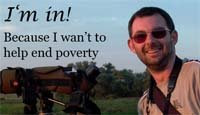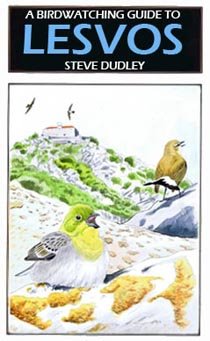18 - 24 NovemberSpot the new pics! Not all are towards the end. And still more to come, so keep dropping by!

Grey-headed Kingfisher, Kisi Bolon. The Gambia. 23 Nov 05 © Jim Swalwell.
A photo diary of our two week stay in The Gambia using
Hidden Gambia.
Steve Dudley, Liz Holder and Jim Swalwell with guides Sering Bojang (raysweety_bird@hotmail.com)(19 & 22 Nov) and
Kebba Sosseh (ksosseh@yahoo.com) (23 Nov - 2 Dec).
Itinerary and full species list.
I regularly lead wildlife holidays to The Gambia (and elsewhere) for
Speyside Wildlife.

Pool at Darwin Centre, Abuko NR, The Gambia. 19 Nov 05 (2)

Bushbok. Abuko NR, The Gambia. 19 Nov 05 (1)

Hamerkop. Abuko NR, The Gambia. 19 Nov 05 (1)

African Jacana. Abuko NR, The Gambia. 19 Nov 05 (1)

Nile Crocodile and Watteld Plover. Abuko NR, The Gambia. 19 Nov 05 (1)

Nile Crocodile . Abuko NR, The Gambia. 19 Nov 05 (1)

White-backed Night-Heron. Abuko, The Gambia. 19 Nov 05
© Jim Swalwell

Hibiscus flower sp. Abuko NR, The Gambia. 19 Nov 05 (2)

Callithrix. Abuko NR, The Gambia. 19 Nov 05 (2)

Hooded Vulture. Abuko NR, The Gambia. 19 Nov 05 (2)

Swallow-tailed Bee-eater. Abuko NR, The Gambia. 19 Nov 05 (1)

Savanah woodland. Brufut Woods, The Gambia. 19 Nov 05 (2)

African Hobby. Brufut Woods, The Gambia. 19 Nov 05 (1)

African Hobby. Brufut Woods, The Gambia. 19 Nov 05 (1)

Klaas's Cuckoo. Brufut Woods, The Gambia. 19 Nov 05 (1)

African Harrier Hawk. Brufut Woods, The Gambia. 20 Nov 05 (1)

Black-billed Wood-Dove. Brufut Woods, The Gambia. 20 Nov 05 (1)

Woodland Kingfisher. Brufut Woods, The Gambia. 20 Nov 05 (1)

Little Bee-eater. Brufut Woods, The Gambia. 20 Nov 05 (1)

Broad-billed Roller. Brufut Woods, The Gambia. 20 Nov 05 (1)

Greater Blue-eared Glossy Starling. Brufut Woods, The Gambia. 20 Nov 05 (1)

Grey Woodpecker. Brufut Woods, The Gambia. 20 Nov 05 (1)

Yellow-billed Shrike. Brufut Woods, The Gambia. 20 Nov 05 (1)

Red-billed Hornbill. Brufut Woods, The Gambia. 20 Nov 05 (1)

Bearded Barbet. Brufut Woods, The Gambia. 20 Nov 05 (1)

Deiderick Cuckoo (female). Brufut Woods, The Gambia. 20 Nov 05 (1)

Botanical Gardens, Bakau, The Gambia. 20 Nov 05 (2)

Bakau/Fajara fish market, The Gambia. 20 Nov 05. © Liz Holder.

Bakau/Fajara fish market, The Gambia. 20 Nov 05. (2).

Bakau/Fajara fish market, The Gambia. 20 Nov 05. © Liz Holder.

Primary forest, Abuko, The Gambia. 21 Nov 05 (2)

Blue-breasted kingfisher. Abuko, The Gambia. 21 Nov 05 (1)

Black Crakes. Abuko, The Gambia. 21 Nov 05 (1)

Striated Heron. Abuko, The Gambia. 21 Nov 05 (1)

Dragonfly sp. Abuko, The Gambia. 21 Nov 05 (1)

Red Colobus. Abuko, The Gambia. 21 Nov 05 (1)

SPD birding Abuko, The Gambia. 21 Nov 05. © Liz Holder.

Primary forest, Abuko, The Gambia. 21 Nov 05 (2)

Violet Turaco. Abuko, The Gambia. 21 Nov 05 (1)

Dragonfly sp. Abuko, The Gambia. 21 Nov 05 (1)

Black-headed Heron. Abuko, The Gambia. 21 Nov 05 (1)

Giant Kingfisher. Abuko, The Gambia. 21 Nov 05 (1)

Giant Kingfisher. Abuko, The Gambia. 21 Nov 05 (1)

Black-crowned Night-Heron (imm). Abuko, The Gambia. 21 Nov 05

Pied Hornbill. Abuko, The Gambia. 21 Nov 05 (1)

Verreaux's Eagle Owl on nest. Abuko, The Gambia. 21 Nov 05 (1)

Dragonfly sp. Abuko, The Gambia. 21 Nov 05 (1)

Savanah woodland, Marakissa, The Gambia. 22 Nov 05 (2)

African Green Pigeon. Marakissa, The Gambia. 22 Nov 05 (1)

Blue-bellied Roller. Marakissa, The Gambia. 22 Nov 05 (1)

SPD in Marakissa, The Gambia. 22 Nov 05. © Liz Holder.

White-crested Helmet-Shrike. Marakissa, The Gambia. 22 Nov 05 (1)

Savanah woodland, Marakissa, The Gambia. 22 Nov 05 (2)

Elephant grass and rice field. Marakissa, The Gambia. 22 Nov 05 (2)

Dusty track, Marakissa, The Gambia. 22 Nov 05. © Liz Holder.

Dragonfly sp. Marakissa, The Gambia. 22 Nov 05 (2)

Women harvesting rice field. Marakissa, The Gambia. 22 Nov 05 (2)

Women cooking. Marakissa, The Gambia. 22 Nov 05 (2)

Liz taking the strain. Marakissa River Camp, The Gambia. 22 Nov 05 (2)

Pearl-spotted Owlet. Tanjureng, The Gambia. 22 Nov 05 (1)

Butterfly sp. Tanjureng, The Gambia. 22 Nov 05 (2)

Caspian, Royal, Lesser-crested and Sandwich Terns. Tanji beach The Gambia. 22 Nov 05(1)

Royal Tern. Tanji beachThe Gambia. 22 Nov 05 (1)

Fiddler Crab. Tanji beachThe Gambia. 22 Nov 05 (1)

Jim, Pineapple and broken down 4x4 atthe police check-point, Brufut, The Gambia. 22 Nov 05 (2)

Pools at Pirang, The Gambia. 23 Nov 05 (2)

Pied Kingfisher. Pirang, The Gambia. 23 Nov 05 (1)

Wire-tailed Swallows. Pirang, The Gambia. 23 Nov 05 (1)

On the road between Pirang and Bintang, The Gambia. 23 Nov 05 (2)

Along the road between Pirang and Bintang, The Gambia. 23 Nov 05 (2)

Along the road between Pirang and Bintang, The Gambia. 23 Nov 05 (2)

Along the road between Pirang and Bintang, The Gambia. 23 Nov 05 (2)

Along the road between Pirang and Bintang, The Gambia. 23 Nov 05 (2)

Boarding the Safari Queen II. Bintang, The Gambia. 23 Nov 05 (2)

The old Safari Queen. Bintang, The Gambia. 23 Nov 05 (2)

Kebba on the phone in the middle of the River Gambia between Bintang and Tendaba, The Gambia. 23 Nov 05 (2)

Fishing pirogue on River Gambia between Bintang and Tendaba, The Gambia. 23 Nov 05 (2)

SPD birding along the River Gambia, The Gambia. 23 Nov 05. © Liz Holder.

Approaching Tendaba Camp, The Gambia. 23 Nov 05 (2)

Five star accommodation at Tendaba Camp, The Gambia. 23 Nov 05 (2)

Creek crawl along Kisi Bolon, The Gambia. 23 Nov 05 (2)

Creek crawl along Kisi Bolon, The Gambia. 23 Nov 05 (2)

White-throated Bee-eater. Kisi Bolon, The Gambia. 23 Nov 05. © Jim Swalwell.

Pink-backed Pelican. Kisi Bolon, The Gambia. 23 Nov 05 (c) Jim Swalwell.

African Darter. Kisi Bolon, The Gambia. 23 Nov 05. © Jim Swalwell.

Grey-headed Kingfisher, 23 Nov 05 Kisi Bolon. The Gambia. 23 Nov 05 © Jim Swalwell.

Meadows up Kisi Bolon, The Gambia. 23 Nov 05 (2)

Woolly-necked Stork. Kisi Bolon, The Gambia. 23 Nov 05. © Jim Swalwell.

Spur-winged Goose. Kisi Bolon, The Gambia. 23 Nov 05. © Jim Swalwell.

Hello John, got a new motor? Our outboard falls off teh back of the boat when we are jsut about as far away from camp, on the oppistie side of the River Gambia up the top of Kisi Bolon. What could possibly go wrong now? Oh - it got dark and mozzies the size of elephants ate us! The Gambia. 23 Nov 05. © Liz Holder.

Dawn at the Tendaba quay, The Gambia. 24 Nov 05 (2)

Safari Queen II moored at Tendaba, The Gambia. 24 Nov 05 (2)

African Fishing Eagle following the Safari Queen, The Gambia. 24 Nov 05. © Jim Swalwell.

Farafenni ferry, The Gambia. 24 Nov 05 (2)

Trucks queing for Farafenni ferry, The Gambia. 24 Nov 05 (2)

Farafenni, The Gambia. 24 Nov 05 (2)

On the road between Farafenni and Kau-ur Wetlands, The Gambia. 24 Nov 05 (2)

European Griffon Vulture between Farafenni and Kau-ur Wetlands, The Gambia. 24 Nov 05. © Jim Swalwell.

New tarmac road between Farafenni and Kau-ur Wetlands, The Gambia. 24 Nov 05 (2)

Chameleon on road between Farafenni and Kau-ur Wetlands, The Gambia. 24 Nov 05 (2)

Exclamatory Paradise Wydah between Farafenni and Kau-ur Wetlands, The Gambia. 24 Nov 05. © Jim Swalwell.

Egyptian Plover and Senegal Thick-knees. Kau-ur Wetlands, The Gambia. 24 Nov 05 (1)

Chestnut-backed Sparrow-Lark. Kau-ur Wetlands, The Gambia. 24 Nov 05 (1)

Spur-winged Plover. Kau-ur Wetlands, The Gambia. 24 Nov 05 (1)

Egyptian Plover. Kau-ur Wetlands, The Gambia. 24 Nov 05 (1)

Kittlitz's Plover and Senegal Thick-knees. Kau-ur Wetlands, The Gambia. 24 Nov 05 (1)

Collared Pratincole. Kau-ur Wetlands, The Gambia. 24 Nov 05 (1)

Northern Anteater Chat. Between Kau-ur Wetlands and Kuntuar, The Gambia. 24 Nov 05 (1)

On road between Kau-ur Wetlands and Kuntuar, The Gambia. 24 Nov 05 (2)

Getting just a little dusty on the road between Kau-ur Wetlands and Kuntuar, The Gambia. 24 Nov 05 (2)

Street through Kuntuar, The Gambia. 24 Nov 05 (2)

On board the Lady Hippo with lunch about to be served, The Gambia. 24 Nov 05 (2)

View from the Lady Hippo, The Gambia. 24 Nov 05 (2)

Relaxed birding from the Lady Hippo, The Gambia. 24 Nov 05 (2)

View from the Lady Hippo, The Gambia. 24 Nov 05 (2)

Young Ruppell's Griffon Vulture on nest from Lady Hippo, The Gambia. 24 Nov 05. © Jim Swalwell

Weaver nests along the River Gambia, The Gambia. 24 Nov 05 (2)

Bush fire in the distance, The Gambia. 24 Nov 05 (2)

Bush fire not too far away, The Gambia. 24 Nov 05 (2)

Marabou from Lady Hippo, The Gambia. 24 Nov 05. © Jim Swalwell

Marabou from Lady Hippo, The Gambia. 24 Nov 05. © Jim Swalwell

Marabous from Lady Hippo, The Gambia. 24 Nov 05. © Jim Swalwell

One hell of a bush fire, The Gambia. 24 Nov 05 (2)

Hippos (mallow-mallow) from Lady Hippo, The Gambia. 24 Nov 05. © Jim Swalwell

Relaxing on the Lady Hippo - just look at the state of those legs! (2)

River Gambia separates around the eastern end of McCarthy Island, The Gambia. 24 Nov 05 (2)

Our bush tent at Bird Safari Camp, The Gambia. 25 Nov 05. © Liz Holder.

Our ensuite facilities. Bird Safari Camp, The Gambia. 25 Nov 05. (2)

Our riverside view from the tent. Bird Safari Camp, The Gambia. 25 Nov 05. (2)

Kebba working to the max! Bird Safari Camp, The Gambia. 25 Nov 05. © Liz Holder.

Palm-nut Vulture. Bird Safari Camp, The Gambia. 25 Nov 05. (1)

Tent-cleaners on the outside. Bird Safari Camp, The Gambia. 25 Nov 05. (2)

. . . and on the inside. Just who are you? Bird Safari Camp, The Gambia. 25 Nov 05. (2)

That's who you are. Bird Safari Camp, The Gambia. 25 Nov 05. (2)

Village Widowbird. Bird Safari Camp, The Gambia. 25 Nov 05. (2)

Guinea-fowl Butterfly. Bird Safari Camp, The Gambia. 25 Nov 05. (1)

One of the bush tracks at Bird Safari Camp, The Gambia. 25 Nov 05. (2)

Liz appearing through the elephant grass lined bush track. Bird Safari Camp, The Gambia. 25 Nov 05. (2)

Long-tailed Glossy Starling. Bird Safari Camp, The Gambia. 25 Nov 05. (2)

Red-necked Falcon. Bird Safari Camp, The Gambia. 25 Nov 05. (2)

Butterfly sp. Bird Safari Camp, The Gambia. 25 Nov 05. (2)

Baobab tree. The juice from the fruit is to die for! Bird Safari Camp, The Gambia. 25 Nov 05. (2)

Our ensuite facilities. Bird Safari Camp, The Gambia. 25 Nov 05. (2)
Still more to come!
Itinerary and full species list.
Images © Steve Dudley unless otherwise stated
(1) Leica APO Televid 77 20xWA Nikon Coolpix 995
(2) Nikon Coolpix 995







































































































































































